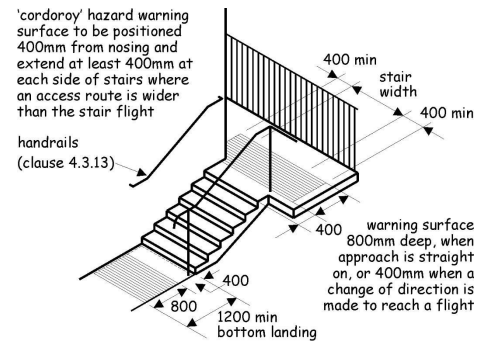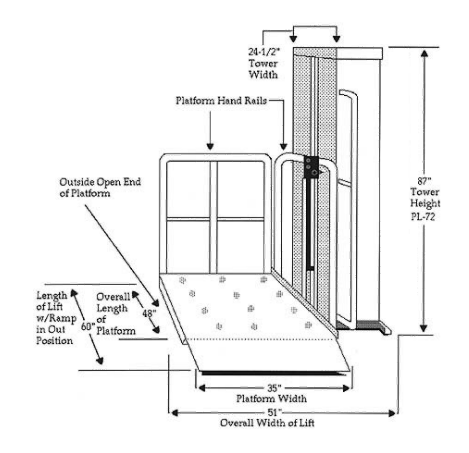The Equality Act 2010 brings together over 116 separate pieces of legislation into one single Act. Combined, they make up a new Act that provides a legal framework to protect the rights of individuals and advance equality of opportunity for all.
The Act simplifies, strengthens and harmonizes the current legislation to provide Britain with a new discrimination law which protects individuals from unfair treatment and promotes a fair and more
equal society.
- The Equal Pay Act 1970
- The Sex Discrimination Act 1975
- The Race Relations Act 1976
- The Disability Discrimination Act 1995
- The Employment Equality (Religion or Belief) Regulations 2003
- The Employment Equality (Sexual Orientation) Regulations 2003
- The Employment Equality (Age) Regulations 2006
- The Equality Act 2006, Part 2
- The Equality Act (Sexual Orientation) Regulations 2007
CQC inspections have frequently resulted in requests to see evidence of how the Practice has considered access and attempted to make improvements. It is recognised that it is not always reasonably possible to make structural changes to buildings, occasionally such
changes are not permitted because of local planning rules. The CQC will usually accept this provided practice owners have made suitable alternative arrangements for patients. However the Act requires you to make these considerations and having completed a suitable audit is a good first step.
Once you have answered the questions, you should consider what actions are required and how and when you plan to achieve them. Please complete the Audit summary sheet at end of this audit.
| Section 1 Staff Training | Yes/No |
|---|---|
| 1. All staff must understand the Equality Act 2010 and their roles and responsibilities in respect of legal compliance. | YES |
| 2. All staff must understand the duty under the Equality Act 2010 to make reasonable adjustments to policies procedures and features of premises. | YES |
| 3. Induction training for all new staff includes Disability equality training | YES |
| 4. All staff have received awareness training to understand the importance of promoting disability equality in the context of employment and patient delivery. | YES |
| 5. All staff understands the social model of disability and recognise that disability equality is about meeting the individual and different needs. | YES |
| 6. All staff understands the concept of institutional discrimination and how this can arise from policy and practice. | YES |
| 7. Appropriate staff must receive impairment specific training to ensure that disable patients are treated in an appropriate and sensitive way. and sensitive way. | YES |
| 8. All staff are required as part of their personal objectives to promote equality and not discriminate unfairly against other members of staff or patients. | YES |
| 9. To ensure that appropriate measures have been put in place so that the staff know how to access communication support and communicate effectively with disable patients such as British sign language/ interpretation service, equipment such as Type talk Minicom Loop systems Large and Clear print Braille | YES |
| Section 2 Employment | Yes/No |
|---|---|
| 1. There is a written Equal Opportunities policy or statement, which recognises the rights of disabled staff and patients. | YES |
| 2. An agreed grievance procedure is available for any employee who believes they have been unfairly treated on the grounds of a disability or for a reason related to their disability. | YES |
| 3. Staff involved in the appraisal of others have been trained in disability equality issues. | YES |
| 4. The practice has in place a comprehensive training programme based on the results of a training needs analysis. | YES |
| Section 3 Environment | Yes/No |
|---|---|
| 1. Is there any car parking on site or in the vicinity? | N/A practice is on a high street and council removed parking for buslane |
| 2. Is there any designated parking for Disabled Parking Badge Holders? | N/A practice is on a high street and council removed parking for buslane |
| (a) Does it comply with the standard size and layout ? Standard bay is 4.8m long and 2.4m wide Disabled bay is 4.8m long and 3.6m wide. You should yellow cross hatch the extra 1.2m width to allow for a wheelchair alongside. | N/A practice is on a high street and council removed parking for buslane |
| (b) How far is the designated parking from the main entrance (approx.)? Should be no more than 50m | N/A practice is on a high street and council removed parking for buslane |
| (c) What is the surface of the car park (gravel, tarmac etc)? | N/A practice is on a high street and council removed parking for buslane |
| (d) Is the car park well lit? | N/A practice is on a high street and council removed parking for buslane |
| 3. Is there a bus stop in the vicinity (within 50m)? | Yes |
| 4. Is the route to the main entrance clearly signed? | Yes |
| (a) Is the route suitable for wheelchair users? | Yes |
| (b) Are there dropped kerbs where necessary? | Yes |
| (c) Is this route suitably lit? | Yes |
| 5. Is the main entrance level, ramped or stepped (see Appendix A1)? | Slight step |
| (a) If stepped are there handrails on both sides? | No due to height of step |
| (b) Are the nosings colour contrasted? | - |
| (c) Is there a tactile warning strip at the top? | - |
| (d) What is the rise of the steps? | 10cm |
| (e) What is the going of the steps? | 10cm |
| (f) How many steps in a flight? | 1 |
| (g) Is there a ramp alongside the steps? | No we have portable |
| (h) What is the gradient of the ramp? | BS standard ramp |
| (i) What is the length of the ramp? | - |
| (j) Is there a level platform at the top of the ramp | Yes |
| 6. Is the entrance door automatic or manual? | Manual |
| 7. Does at least one leaf give a minimum clear opening width of 800mm? | Yes |
| 8. Is the door furniture at a reasonable height (1400mm from ground level and colour contrasted from the frame? | Yes |
| (a) If there is a doorbell or entry system, is it at a reasonable height (1200mm from ground level)? | Yes |
| (b) Is the entrance mat of firm texture and flush with the floor? | Yes |
| (c) Is there a vision panel at wheelchair level? | Yes |
| 9. Is at least part of the reception desk at a wheelchair accessible height? | Yes |
| (a) Is there a hearing induction loop or other amplifying device fitted in reception? | No |
| (b) Is there any seating in the waiting area? | Yes |
| (c) If yes, is there a mix of seats with arms and seats without arms? | Yes |
| (d) Is there space for a wheelchair user to wait? | Yes |
| 10. Is all the ground floor accessible? | Yes |
| 11. Is there a lift in the building? | No |
| What type of lift? | Yes/No |
|---|---|
| (a) a full passenger lift? | - |
| (b) If a passenger lift does it comply with Part M (see Appendix B) | - |
| (c) a platform stairlift? | - |
| (d) a platform lift? | - |
| 12. Is the staircase suitable for ambulant disabled people (see Appendix C)? | - |
| (a) What is the rise of each step? | - |
| (b) What is the going of each step? | - |
| (c) Are the nosing of each step colour contrasted | - |
| (d) How many steps in each flight? | - |
| (e) Are there any intermediate landings? | - |
| (f) Are the handrails continuous on both sides? | - |
| (g) Do the handrails extend 300mm past the top and bottom steps? | - |
| 13. Do all internal doors give a minimum clear opening width of 750mm? | Yes |
| 14. Is the door furniture at a reasonable height? | Yes |
| (a) Is there a vision panel at a wheelchair height? | - |
| 15. Are there any internal ramps in the building? | Yes |
| (a) If yes what are the gradients? | 1:8 |
| (b) What are the lengths of the ramps? | 12cm x2 |
| (c) Are handrails on the ramps | no |
| 16. Is there a wheelchair accessible WC cubicle? | yes |
| (a) Does it comply with the minimum dimensions of 2000mm x 1500mm? | yes |
| (b) Does it comply with the dimensions in BS 8300 2200mm x 1500mm | yes |
| (c) Are the grab-rails colour contrasted from the background? | no |
| (d) Are the hand washing and drying facilities within easy reach of anyone sitting on the WC? | yes |
| (e) Is there an emergency pull-cord that reaches down to the floor? | no |
| 17. Is there a textphone in the building? | no |
| 18. Is there a public telephone? | Yes reception can advise |
| (a) Is it at a reasonable height for wheelchair users (car or coin slot 1200mm from floor level)? | yes |
| (b) Does it have an acoustic hood? | No |
| 19. Is the main hall fitted with a hearing induction loop? | no |
| 20. If kitchen facilities are available are they at a wheelchair accessible height? | - |
Additional Comments:
Need for hearing induction loop
Need for Emergency pull cord
Need For Grab Rails
Audit carried out by: 06/09/2024
Bijan Shamsaee
Appendix A1

Appendix B

Appendix C Provisions
An internal stair will satisfy requirement M2 if;
- An internal stair will satisfy requirement M2 if;
- All step nosings are distinguishable through contrasting brightness
- The rise of a flight between landings is not more than 1800mm;
- It has top and bottom, and if necessary intermediate landings, each of whose lengths is not less than 1200mm clear of any door swing in to it
- The rise of each step is uniform and not more than 170mm
- The going of each step is uniform and not less than 250mm, which for tapered treads should be measured at a point 270mm from the “inside” of the stair
- Risers are not open
- There is a continuous handrail on each side of flights and landings, if the rise of the stair comprises two or more
risers.
Appendix D

